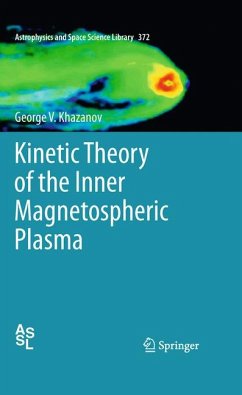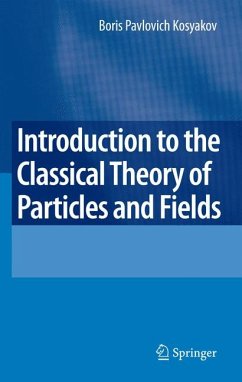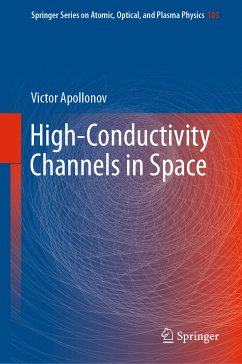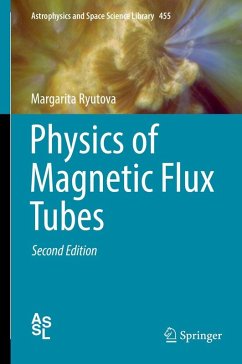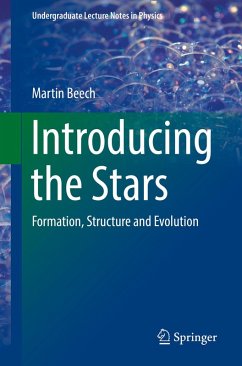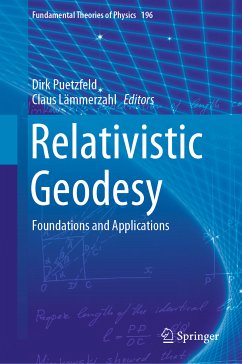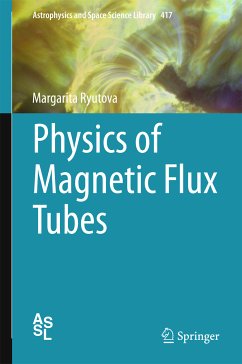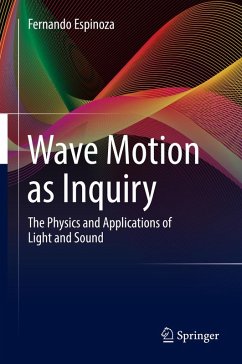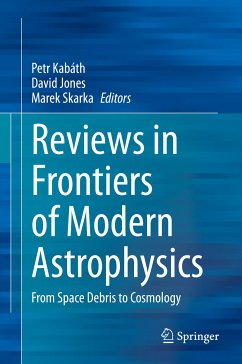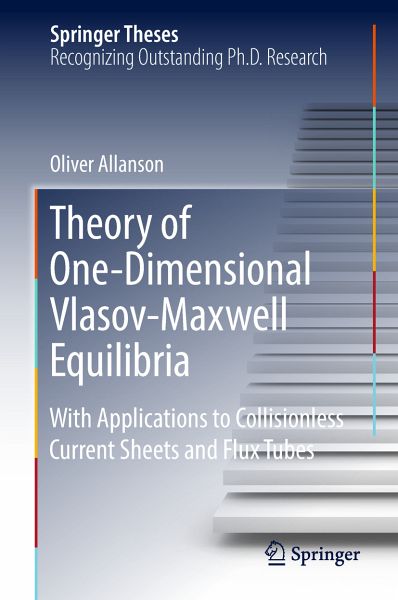
Theory of One-Dimensional Vlasov-Maxwell Equilibria (eBook, PDF)
With Applications to Collisionless Current Sheets and Flux Tubes
Versandkostenfrei!
Sofort per Download lieferbar
72,95 €
inkl. MwSt.
Weitere Ausgaben:

PAYBACK Punkte
36 °P sammeln!
This book describes and contextualises collisionless plasma theory, and in particular collisionless plasma equilibria. The Vlasov-Maxwell theory of collisionless plasmas is an increasingly important tool for modern plasma physics research: our ability to sustain plasma in a steady-state, and to mitigate instabilities, determines the success of thermonuclear fusion power plants on Earth; and our understanding of plasma aids in the prediction and mitigation of Space Weather effects on terrestrial environments and satellites. Further afield, magnetic reconnection is a ubiquitous energy release me...
This book describes and contextualises collisionless plasma theory, and in particular collisionless plasma equilibria. The Vlasov-Maxwell theory of collisionless plasmas is an increasingly important tool for modern plasma physics research: our ability to sustain plasma in a steady-state, and to mitigate instabilities, determines the success of thermonuclear fusion power plants on Earth; and our understanding of plasma aids in the prediction and mitigation of Space Weather effects on terrestrial environments and satellites. Further afield, magnetic reconnection is a ubiquitous energy release mechanism throughout the Universe, and modern satellites are now able to make in-situ measurements with kinetic scale resolution.
To keep pace with these challenges and technological developments, a modern scientific discussion of plasma physics must enhance, and exploit, its 'literacy' in kinetic theory. For example, accurate analytical calculations and computer simulations of kinetic instabilities are predicated on a knowledge of Vlasov-Maxwell equilibria as an initial condition. This book highlights new fundamental work on Vlasov-Maxwell equilibria, of potential interest to mathematicians and physicists alike. Possible applications involve two of the most significant magnetic structures known to confine plasma and store energy: current sheets and flux tubes.
To keep pace with these challenges and technological developments, a modern scientific discussion of plasma physics must enhance, and exploit, its 'literacy' in kinetic theory. For example, accurate analytical calculations and computer simulations of kinetic instabilities are predicated on a knowledge of Vlasov-Maxwell equilibria as an initial condition. This book highlights new fundamental work on Vlasov-Maxwell equilibria, of potential interest to mathematicians and physicists alike. Possible applications involve two of the most significant magnetic structures known to confine plasma and store energy: current sheets and flux tubes.
Dieser Download kann aus rechtlichen Gründen nur mit Rechnungsadresse in A, B, BG, CY, CZ, D, DK, EW, E, FIN, F, GR, HR, H, IRL, I, LT, L, LR, M, NL, PL, P, R, S, SLO, SK ausgeliefert werden.



